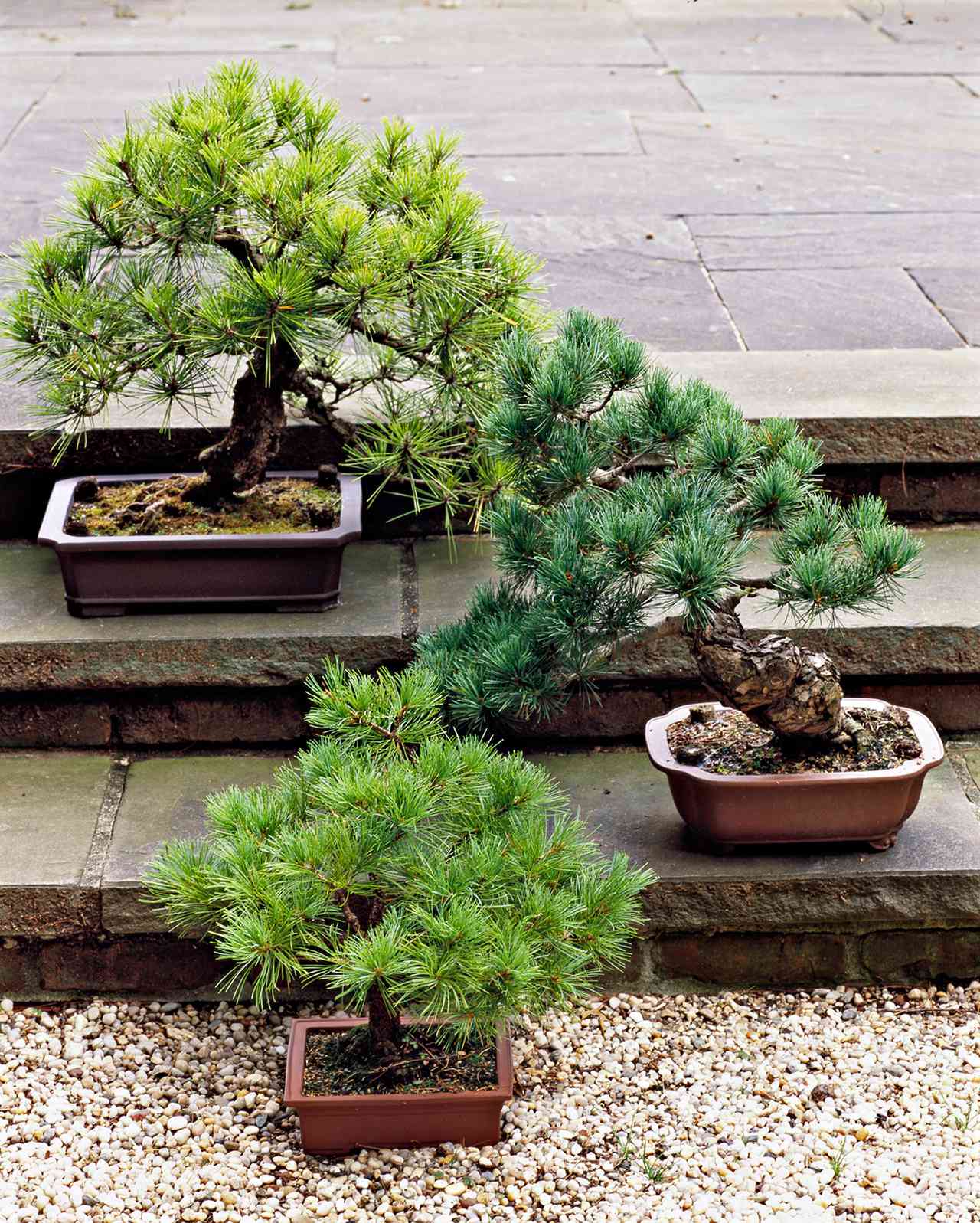
Bonsai Tree: What is so special about bonsai trees?
Bonsai (Japanese: ‘tray planting’) is the Japanese art of growing and training miniature trees in pots, developed from the traditional Chinese art form of penjing. Unlike penjing, which utilizes traditional techniques to produce entirely natural scenery in small pots that mimic the grandiose shapes of real-life scenery, the Japanese “bonsai” only attempts to produce small trees that mimic the shape of real-life trees.
Similar versions of the art exist in other cultures, including the miniature living landscapes of Vietnamese Hòn non bộ. It was during the Tang dynasty, when penjing was at its height, that the art was first introduced in Japan.
A bonsai is created beginning with a specimen of source material. This may be a cutting, seedling, or small tree of a species suitable for bonsai development. Bonsai can be created from nearly any perennial woody-stemmed tree or shrub species that produces true branches and can be cultivated to remain small through pot confinement with crown and root pruning. Some species are popular as bonsai material because they have characteristics, such as small leaves or needles, that make them appropriate for the compact visual scope of bonsai.
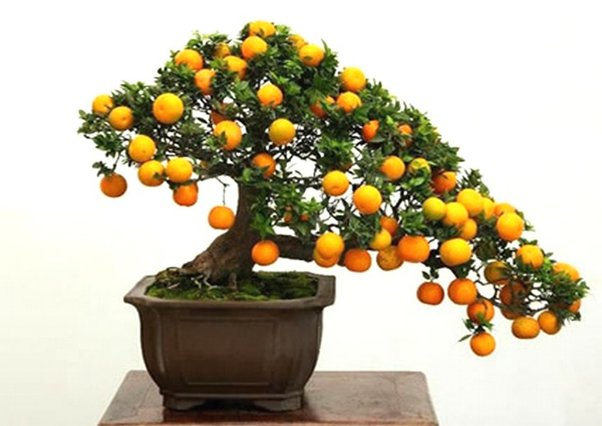
The source specimen is shaped to be relatively small and to meet the aesthetic standards of bonsai, which emphasizes not the entirety of grand sceneries but rather only the tree itself. When the candidate bonsai nears its planned final size, it is planted in a display pot, usually one designed for bonsai display in one of a few accepted shapes and proportions.
From that point forward, its growth is restricted by the pot environment. Throughout the year, the bonsai is shaped to limit growth, redistribute foliar vigor to areas requiring further development, and meet the artist’s detailed design.
Indoor and Outdoor Bonsai
There are indoor and outdoor bonsai plants. Most bonsai should actually be placed outside, where they are exposed to the four seasons just like normal trees are. Outdoor ones are made from hardy evergreens or deciduous plants that need a cold period of dormancy during the winter. They are not meant to be indoors year-round.
Only tropical plants can survive in the indoor climate of your house; they don’t need a cold period and are better suited to growing indoors. My azalea was not a hardy species and would blossom in late winter in the house, making it perfect for an indoor bonsai. Jade plants are easy to train as bonsai by pruning and removing new shoots to get the look you want.
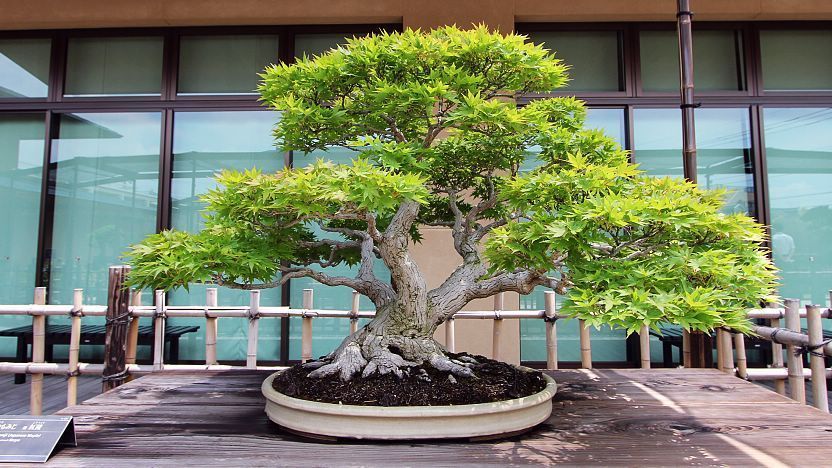
The living art of Bonsai
Bonsai Empire is a community built by enthusiasts and experts from around the world. We introduce you to the fascinating and living art of Bonsai, and help you get started!
Bonsai tree care
Keeping a Bonsai tree alive is not a difficult task, but there are a few things you should be aware of. Bonsai trees are planted in small pots with minimal space for water and nutrient reserves. That means you need to water and fertilize your tree regularly. Make sure your Bonsai gets plenty of light, water, and fertilize when needed and your tree is sure to thrive!
How to Begin Bonsai Gardening
Bonsai plants are grown and trained in shallow pots, so they often need daily watering in warm weather. In the winter, tender bonsai need to go indoors or in a greenhouse; hardy plants can stay outdoors as long as they’re protected from drying wind and direct sun.
Growing and cultivating
There are different methods to propagate trees, some need a lot of patience and some offer immediate results. Growing a tree from seed means you have full control over the styling of your Bonsai plant, but it takes at least five years before you have anything that resembles a tree. Buying a tree in a nursery means you can style it right away.
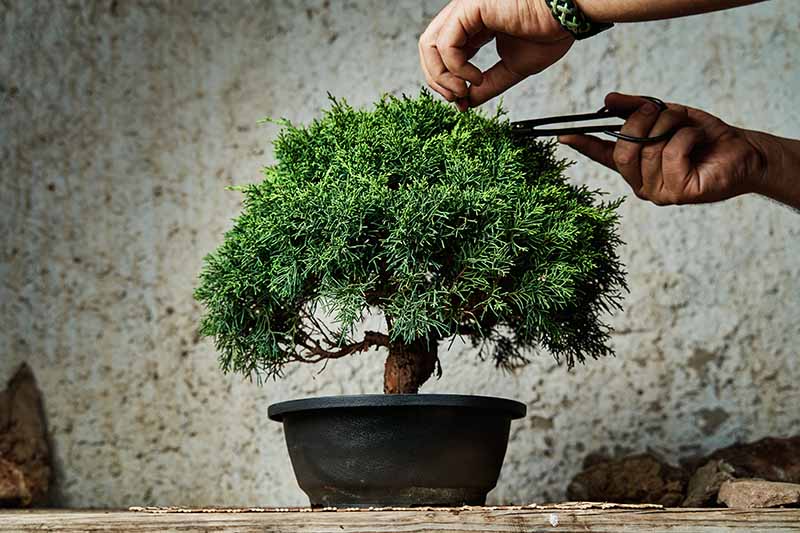
Step 1: Prep Root Ball
Remove the plant from its nursery container, and cut off the bottom two-thirds of the root ball. Rake through the soil on the surface to expose some roots. Moisten all the roots using a spray bottle.
Step 2: Put Root Ball in Pot
Remove dead branches and branches that distract from the vision you have for your tree. Remove any dead roots and any large roots that will interfere with potting. Position the plant in the pot, and work the soil in around the roots. Top the soil with gravel or moss, and water well.
Step 3: Start Shaping Tree
Decide which branches would benefit from shaping. To achieve the desired shape, wrap wire snugly but not so tightly that it inhibits growth (this will help guide the branch to grow in the direction and shape you want). Remove the wire when the branch has grown enough to hold its new shape.
Bonsai Care After Planting
Once you’ve planted your bonsai, you’ll have to treat it a little differently than a regular houseplant. Follow these tips to keep it in top shape.
Watering
Type-A plant parents won’t love this tip, but it’s the best way to ensure your bonsai gets the right amount of water: Never water on a schedule. With some other houseplants, you may know that Saturday is your watering day, but that doesn’t work for delicate bonsai gardening. Instead, water when the soil feels slightly (not totally) dry.
Fertilizing
As a rule of thumb, most bonsai trees should be fertilized throughout their growing season (early spring to mid-fall). But, fertilizing needs can vary based on the type of tree you are working with. You can use a granular or liquid fertilizer and fertilizers made specifically for bonsai trees . Follow the instructions on the package for the best results.
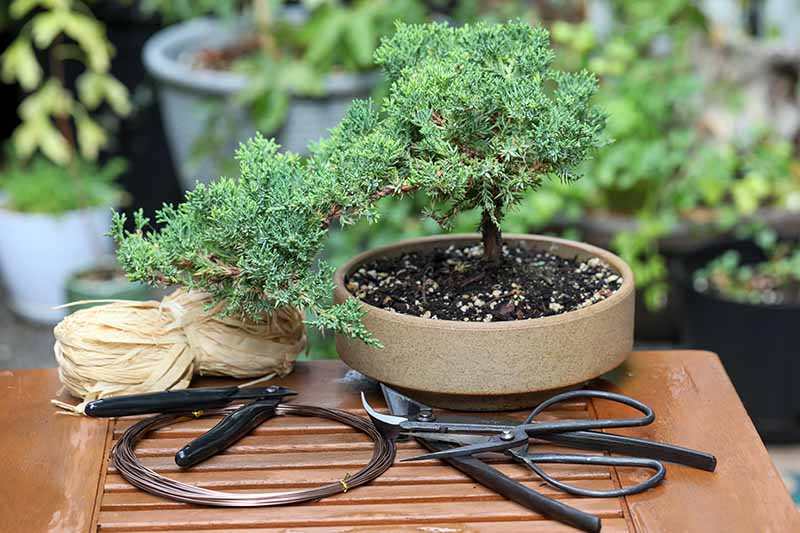
Soil
Most bonsai soil mixes are a combination of Akadama (hard-baked clay), pumice, lava rock, and soil. There are endless combinations, and you’ll have to experiment to figure out which works best for you. A good bonsai soil mix needs to retain water well without drowning the roots.
Repotting
Most young bonsai trees need to be repotted every two years, while more mature trees can be in the same pot for up to five years. You’ll know you need to repot if you see that the roots are exposed and circling around the bottom of the container. If you need to repot, do so in the early spring when the tree is still dormant. As you upgrade to a larger pot, be mindful of your soil mixture to make sure it isn’t too different from what the tree is used to.
Styling
A common misconception is that the plants used for Bonsai are genetically ‘dwarfed’ plants. Bonsai trees are normal plants, propagated like any other, but trained using sophisticated techniques to keep them miniature. The styling of these miniature trees involves important techniques like regular pruning and wiring.
Popular tree species
Each tree species has specific requirements for its cultivation, training, and care. This means selecting the right tree species for your environment (or identifying which tree species you might already have) is crucial to keeping it healthy. We will help you select the tree that’s right for you, or identify the tree you already have. The most popular species include the Ficus and Juniper.
Which Is the Best Bonsai Tree for Beginners?
I admit that my azalea did not respond well to having its roots severely cut back and crammed into that shallow pot and promptly died!
Ficus is probably the easiest to grow for beginners; it’s tolerant of the low humidity indoors.
Here is a short list of good subjects for bonsai:
- Ficus (many species)
- Crassula (jade plant)
- Carmona (tea plant)
- Schefflera
- Calamondin
- Sand pear
- Bougainvillea
- Gardenia
- Jacaranda
- Jasmine
- Pomegranate
- Chinese elm
- Olive
- Rosemary
Reference: en.wikipedia.org/wiki/Bonsai, www.bhg.com, bonsaiempire

တို့အတူချီတက်ကြမယ်
ဘွန်ဇိုင်းလေးရယ်
နှင်းဆီပန်းလေးရယ်
အမြန် ဆုံချင်ပြီ
လုံခြုံဘေးကင်းကြပါစေ
Thank.
Bonsai are very cute and good for interior. 😍
Good evening all ❣️💖
Bonsai are living works of Art. They can’t be compared with any Artform 🥰
Thanks💞💞💞
We love nature
Thanks for your interesting article.💮💜💮
Thanks lots to know about bonsai trees ….
I love bonsai trees..
Bonsai ..so lovely 😍
It’s really a cool and useful piece of info. I’m happy that you simply shared this useful info with us. Please keep us up to date like this. Thank you for sharing.
Good night 🌃🌉
All clickers
Done
Ok
😊💪✊
တလရကြီးပြီးရင် တစ်ပင်ရမယ်
တီချယ့်ကိုပေးဖို့
စိုက်ထားတယ်တဲ့
ပျော်ပြီလေ 😍😍😁😁
🍒😊💪
Fighting 🍒😊
🍒💪
Ads ok 🍒👌
Bonsai is my favorite tree. I really love it. 😍
Good 🍒😊
Ok 🍒😊.
Good
good
Bonsai tree….They are so cute & I think it’s very interesting to plant it. Thank you for sharing planting ways & about bonsai tree.
I love that Bonsai Tree. I think that it’s look so cute and then I also called it, “that kyee pu”.(hee”)
Anyway, thanks for sharing and your efforts.<3